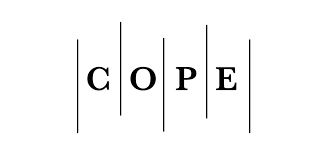MANCOVA Model For Heteroscedasticity And Unbalance Cell Size: Framework
DOI:
https://doi.org/10.29304/jqcm.2022.14.1.885Keywords:
MANCOVA, Heteroscedastic model, Modified MANOVA testAbstract
Multivariate analysis of covariance models are widely used in human societies, principally in health, ecology, environmental science and psychological perspective. As such, the researchers face the task of seeking for ways to improve the performance of these models to respond to the requirements which are treating. This paper proposes an extension of two way MANOVA to two way MANCOVA model under effect one covariate factor for heteroscedastic and unbalanced cell sizes. A type III sums squares of an influence is computed that adjusted for all other influences for suggested two way MANCOVA model, no matter in which order they are included. As classical tests could dangerously biased when homogeneity violates the assumption of cell covariance matrices, the suggested model implemented the modified tests obtained by Zhang & Xiao (2012) to test the hypothesis of model
Downloads
References
[2] Cooper, D. J., Plewes, K., Grigg, M. J., Rajahram, G. S., Piera, K. A., William, T., ... & Barber, B. E. The effect of regularly dosed paracetamol versus no paracetamol on renal function in Plasmodium knowlesi malaria (PACKNOW): study protocol for a randomized controlled trial. Trials, (2018), 19(1), 1-11.
[3] Mochizuki, T., Amagai, T., & Tani, A. Effects of soil water content and elevated CO2 concentration on the monoterpene emission rate of Cryptomeria japonica. Science of the Total Environment, (2018), 634, 900-908.
[4] Focht, B. C., Lucas, A. R., Grainger, E., Simpson, C., Fairman, C. M., Thomas-Ahner, J. M., ... & Clinton, S. K. Effects of a group-mediated exercise and dietary intervention in the treatment of prostate cancer patients undergoing androgen deprivation therapy: results from the IDEA-P trial. Annals of Behavioral Medicine, (2018), 52(5), 412-428.
[5] Kononova, A., McAlister, A., & Oh, H. J. Screen overload: Pleasant multitasking with screen devices leads to the choice of healthful over less healthful snacks when compared with unpleasant multitasking. Computers in human behavior, (2019), 80, 1-11.
[6] CANGÜR, Ş., SUNGUR, M. A., & ANKARALI, H. The Methods Used in Nonparametric Covariance Analysis. Duzce Medical Journal, (2018), 20(1), 1-6.
[7] Rheinheimer, D. C., & Penfield, D. A. The effects of type I error rate and power of the ANCOVA F test and selected alternatives under non-normality and variance heterogeneity. The Journal of Experimental Education, (2001), 69(4), 373-391.
[8] Naji, H. Z. Covariates in the Analysis of Multivariate Repeated Measurements, (2008), (M. Sc. Thesis, University of Basrah).
[9] AL-MOUEL, A. H. S. Nested Repeated measures model sufficiency and Estimation. Chinese Journal of Applied Probability and Statistics, (2004).
[10] Naji, H. Z. Two Random Covariates in Repeated Measurement Model. Basrah journal of science (A), (2014), 32(1), 130-140.
[11] Wilks, S. S. Certain generalizations in the analysis of variance. Biometrika, (1932), 471-494.
[12] Zhang, J. T., & Xiao, S. A note on the modified two-way MANOVA tests. Statistics & Probability Letters, (2012), 82(3), 519-527.
[13] Kim, K., & Timm, N. Univariate and multivariate general linear models: theory and applications with SAS. CRC Press. (2006).
[14] Anderson, T. W. An Introduction to Multivariate Statistical Analysis. 3rd edition, Wiley, New York, (2003).
[15] Watanabe, H., Hyodo, M., & Nakagawa, S. Two-way MANOVA with unequal cell sizes and unequal cell covariance matrices in high-dimensional settings. Journal of Multivariate Analysis, (2020), 179, 104625.
[16] Herr, D. G. On the history of ANOVA in unbalanced, factorial designs: The first 30 years. The American Statistician, (1986), 40(4), 265-270.
[17] Nelder, J. A., & Lane, P. W. The computer analysis of factorial experiments: In memoriam—Frank Yates. The American Statistician, (1995), 49(4), 382-385.
[18] Langsrud. ANOVA for unbalanced data: Use Type II instead of Type III sums of squares. Statistics and Computing, (2003), 13(2), 163-167.
[19] Saber, A. H., & zaki Naji, H. The Sphericity test for Multivariate Repeated Measurement Model has two Covariates. Journal of Al-Qadisiyah for Computer Science and Mathematics, (2010), 2(1).
[20] Naji, H. Z., Dawood, R., & Faik, R. R. Analysis of variance and covariance Repeated Measurement Model. Journal of Basrah Researches, (2011), 37(1), 32-38.













